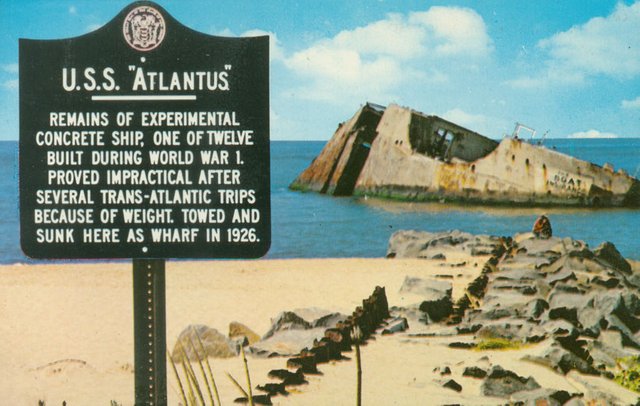Concrete Ships of Philadelphia
( )![card10.jpg]
)![card10.jpg]
http://www.concreteships.org/history/
Building ships out of concrete was thought to of first started in 1848 by Joseph-Loius in southern France. The reinforced concrete was also referred to as ferrocement by many in the industry. Concrete ships had many positive, and negative aspects. The first positive aspect was the materials required to build these ships were cheap and abundant in supply. Unfortunately, the cost of labor, and limited hull space due to the required thick hull made these ships not ideal for most ship builders.
( )
)
http://www.gloucesterdocks.me.uk
It wouldn’t be until World War I, that the potential of this technology was harnessed. Due to shortage, and limited supplies in steel during World War I, the concrete boat industry would have a second chance in the United States. During 1900, concrete barges were used in various areas of Europe. The Netherlands, Norway, Germany, and England were the predominant countries to take advantage of the technology. In 1917, the first self-propelled concrete ship would be launched from Norway. Nearly three months later, the United State Government began researching this style of vessel. In March of 1918, the San Francisco Ship Building Company launched the first American Concrete Ship.

swanson-media.com
The majority of vessels produced by McCloskey & Company were of the Liberty Class of Ship. This class of ship were large cargo ships used to transport supplies, and troops during the War. Today the exist of large concrete ships is rare, and far between. Most of these ships have been scrapped or sunk to create artificial reefs. One relatively close ruin of a concrete ship is in Cape May. The S.S. Atlantus remains approximately one hundred yards off the beach. While little remains of the ships structure today, it stands to show the creativity and innovated thinking used to overcome complex issues in dire times.

http://www.concreteships.org/ships/ww1/atlantus/
Sources:
https://www.google.com/search?q=concrete+boats+nj&source=lnms&tbm=isch&sa=X&ved=0ahUKEwiZ0L-9o8LZAhUSq1kKHaCAA8kQ_AUICygC&biw=1264&bih=789#imgrc=ADxhoXxiLLYwSM:
http://www.concreteships.org/history/
https://www.google.com/search?biw=1264&bih=740&tbm=isch&sa=1&ei=bVGTWpqjGYS85gLktqOwCA&q=concrete+boats+&oq=concrete+boats+&gs_l=psy-ab.3..0j0i30k1j0i24k1l2.105634.105791.0.106201.2.2.0.0.0.0.114.196.1j1.2.0....0...1c.1.64.psy-ab..0.1.81....0.Dv1PfMbwlhk#imgrc=sVNpdcVI4qv-xM:
http://www.gloucesterdocks.me.uk/museum/boats/nbconcrete.htm
100% of the SBD rewards from this #explore1918 post will support the Philadelphia History Initiative @phillyhistory. This crypto-experiment is part of a graduate course at Temple University's Center for Public History and is exploring history and empowering education to endow meaning. To learn more click here.
Cool post! You might also find it interesting that in WW2, Great Britain tried to make ships out of ice: https://99percentinvisible.org/article/project-habbakuk-britains-secret-ice-bergship-aircraft-carrier-project/
great post